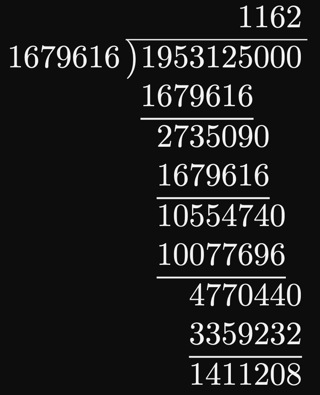You may not use a calculator or computer.
You may write "ln(X)" or "log(X)" to indicate the natural logarithm of X. Else, please let the reader know "log(X)" means log of X to the base 10, just to mention another common base.
You are allowed to use $\ln(1 + x)\approx\ x-\dfrac{x^2}{2} + \dfrac{x^3}{3} \ $ for appropriate small values of $x$.
To reduce some arithmetic, you are allowed to use these if they were to come up in calculations:
$\ln(2) \ \approx \ 0.6931 $
$\ln(3) \ \approx \ 1.0986 $
$\ln(5) \ \approx \ 1.6094 $
If it were to come up, you may use $\ \dfrac{\ln(5)}{\ln(4)} \ \approx \ 1.161$ in a calculation.
Please show the steps without using a calculator or computer to indicate which expression is larger:
$\large4^{5^9} \ \ \ \text{or} \ \ \ 5^{6^8}$

